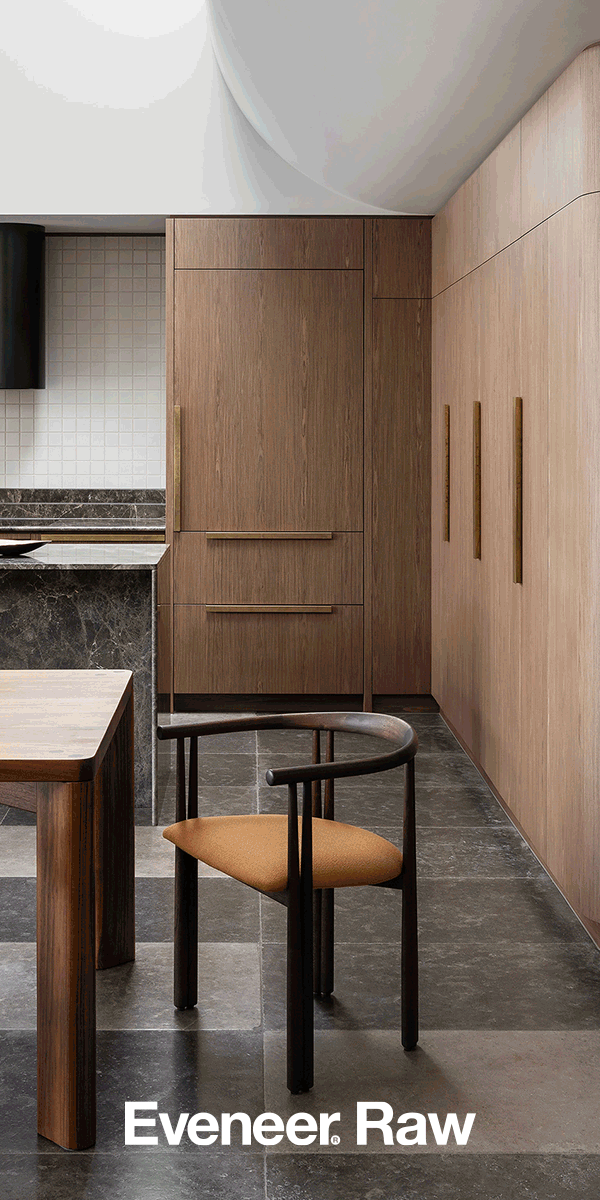A curated seletion of notable exhibitions, events and publications
Hive Hands
In an ongoing collaborative project, three artists explore new modes of (re)use through the expansive possibilities of beeswax, algae and clay.
Essay
Emma Pegrum
Photography
Phillip Huynh

Jessie French with algae-based bioplastic artworks in her studio, 2022.
On a rooftop in Brunswick Street, on Kulin Nation Country, a small but thriving cluster of timber beehives sit among potted plants and ceramic vessels – tiny towers when set against the steel and glass CBD skyline beyond. The hives belong to Nic Dowse, artist and founder of Honey Fingers, an urban beekeeping collective and creative practice investigating ‘bee culture’, or the intersection of bees and humanity. Dowse has been working with Apis mellifera, the common honeybee, for a decade. Joining him is a group of artists and craftspeople who share an interest in the reciprocal relationship they believe is possible between bees and humans, if we can only recalibrate it.
One Honey Fingers member is fellow artist Jessie French, who has developed a bioplastic material made from restoratively farmed red algae. The material is edible, entirely circular, relatively robust and uniquely beautiful. After a breakout exhibition as part of José Roca’s 23rd Biennale of Sydney in 2022, French has become known for her exacting installations of large bioplastic sheets – often marbled with blue, red, green or yellow mineral pigments and suspended in space – as well as her serialised bioplastic vessels and design objects, some of which are held in the National Gallery of Victoria’s permanent collection. Her practice, which exists in synergy with her experimental design studio Other Matter, is an invitation for audiences to engage with the idea of a post-petrochemical future: to imagine a world not defined by plastic objects and landfill. French and Dowse have been collaborating through their respective practices and within the Honey Fingers collective almost since its beginnings in 2013.
Another member of the collective is interdisciplinary artist and ceramicist Zhu Ohmu. Interested in the rise of 3D printed ceramics, Ohmu set out to replicate the mechanics of these printers using her hands. The resulting works are highly recognisable voluptuous vessels, formed by stacking, folding, pressing and pulling coils of clay. By nature of their build, the vessels twist and droop, some parts spilling out and others collapsing in – they appear at once to be writhing and in repose.
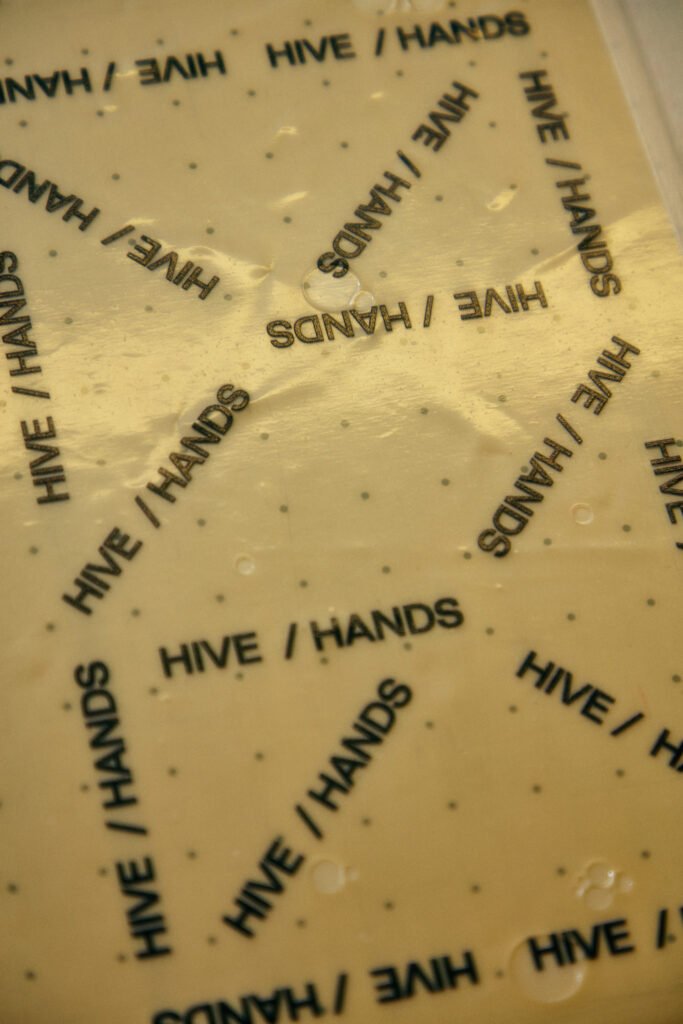
graphics
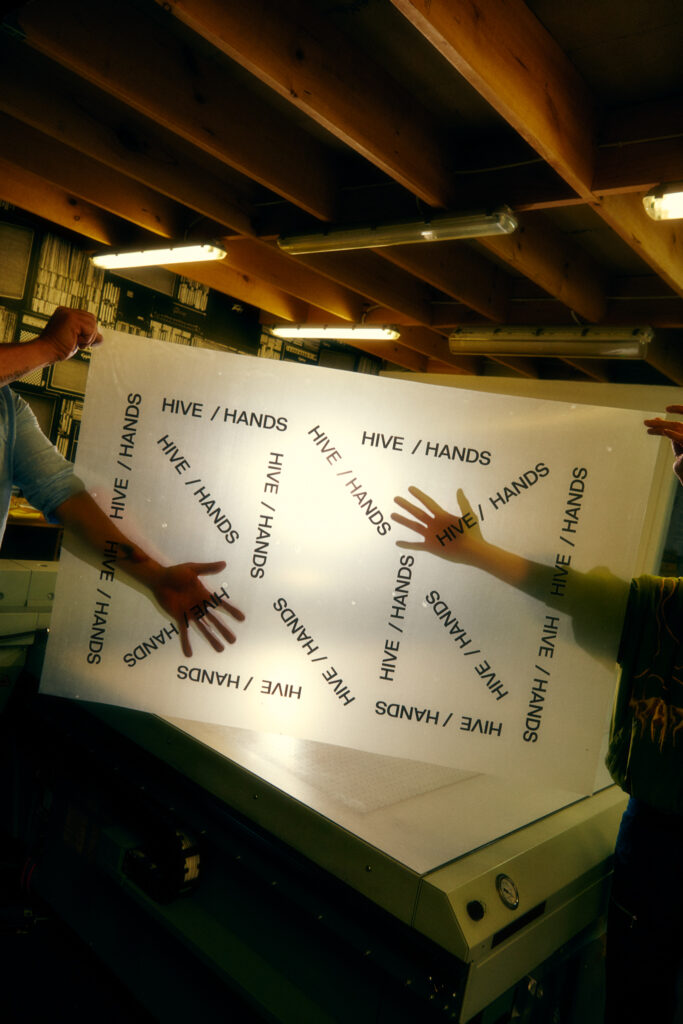
All three artists explore and expand the boundaries of materiality with a commitment to craft and circularity. They operate within fields that, despite their obvious restorative potential, are often unsustainably exploitative. Wax, algae, clay and the various processes – manual and industrial, artisanal and commercial – from which they are derived and in which they can be put to use all present opportunities both tangible and speculative. These creative synergies and shared ethics form the basis of an ongoing collaboration between the three, which late in 2022 culminated in Hive Hands, an exhibition of collaborative works at The Company You Keep’s gallery space in Melbourne, presented by Oigåll Projects.
Reflecting on collectivity, symbiosis and earthly survival, Hive Hands featured a triad of works resulting from this cross-pollination of practices – one from French and Dowse, another from Dowse and Ohmu, and the third from Ohmu and French. The centrepiece of the exhibition was French and Dowse’s Worker, a 1:4 scale model of a timber desk with its own bioplastic-clad bee chimney at one end. French made the bioplastic for the piece, incorporating Honey Fingers beeswax as part of her ongoing efforts to enhance the moisture-wicking properties, weight and strength of the material – all valuable developments for a range of potential applications, from use in public artworks and installations, to interior and architectural fixtures, to scalable solutions in gallery, museum, retail and event settings. The beeswax, French says, also adds a “pearled transparency” to the material’s appearance.
French and Dowse also used the exhibition as an opportunity to test the viability of printing onto and machine-cutting the beeswax-infused bioplastic. (They worked closely on this with Boom Studios, a creative ‘factory’ specialising in bespoke fabrication, building and installation.) Visitors to the exhibition were welcomed by the outcome: bioplastic lettering (in place of a vinyl decal) on the front window and a bioplastic Hive Hands sign suspended from the ceiling inside. The former was created by computer-cutting the Hive Hands text out of a custom-made, opaque bioplastic sheet. The letters were then hand-applied to the window using adhesive. The latter was made using a simple flatbed printer. While presently quite labour-intensive solutions, the artists are optimistic about the potential for further automation and thus scaling of the product. Also, while the current materials don’t interfere with the circularity or reuse of the product (the bioplastic decomposes in water, converting back to fluid that can be added to and made into something else), French is still researching to find sustainable or organic inks and adhesive to make the product biodegradable as well.
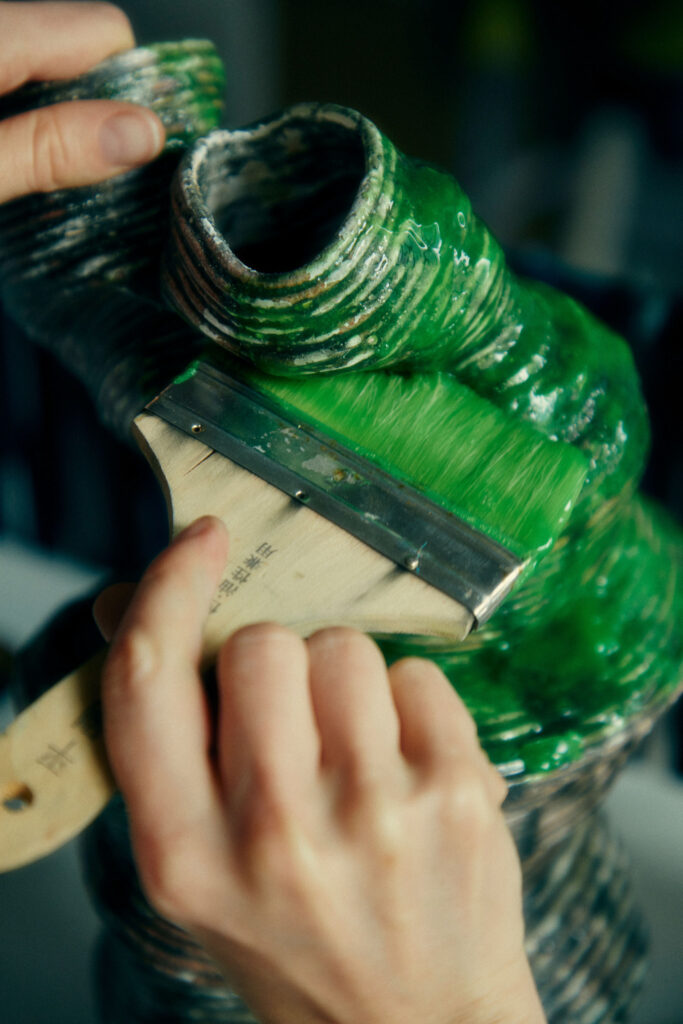

Meanwhile, Dowse and Ohmu’s collaboration was one of sculptural forms: ceramic coil pots built upon by honeybees. The bees, who constructed beautiful comb adornments on the pots, are visible as participants in this part of the work. Displayed in the exhibition atop Perspex cases, the sculptures are less rich in practical as in evocative potential. They are intriguing human-bee collaborations and succinct reminders that our abundant shared environment can inspire mutual care.
With another series of pots, Ohmu and French explored the use of the latter’s bioplastic in fluid form as a glaze – a wet ‘skin’ that dries on to the pots, used to enhance their structure or, in a more targeted manner, to repair or disguise cracks. This builds on Ohmu’s exploration of kintsukuroi – the Japanese art of mending broken pottery with gold lacquer. As in her series Plantsukuroi, where Ohmu encourages the growth of plants in holes and cracks, these works embody the notion of ‘visible repair’ and suggest that unremarkable imperfections can be viewed with new, unexpected and lasting appreciation. For French, these investigations are another opportunity to explore using the bioplastic material in new ways. Previously, she has tested it as an alternative to paint and glue. Such experiments require ongoing and rigorous work but also offer exciting prospects for other conscious practitioners, both in the arts and across a wide variety of design disciplines.
This overlapping display of prototypes and practical design investigations alongside more strictly evocative, speculative works was intentional and deftly curated. On reflection, French says the approach was in keeping with a playful interpretation of the ‘make believe’ that has been occupying her recent thinking. As she explains, when it comes to existential problems like the degradation of our biosphere, it is necessary – as embodied in her practice – to engage imaginations, to inspire people with the surreal and to make them believe in the possibility of a vastly different future by sharing evidence of tangible progress and ingenuity. Hive Hands exemplifies this. The public presentation of developmental and conceptual work is not a procedural bonus – it is a necessary part of designing the future.
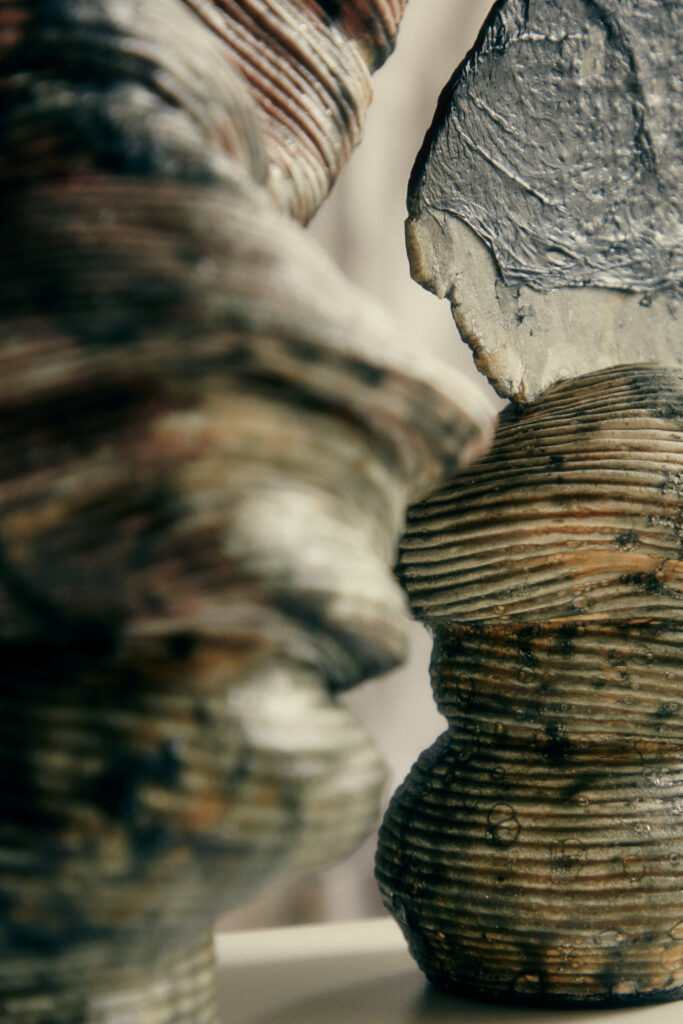
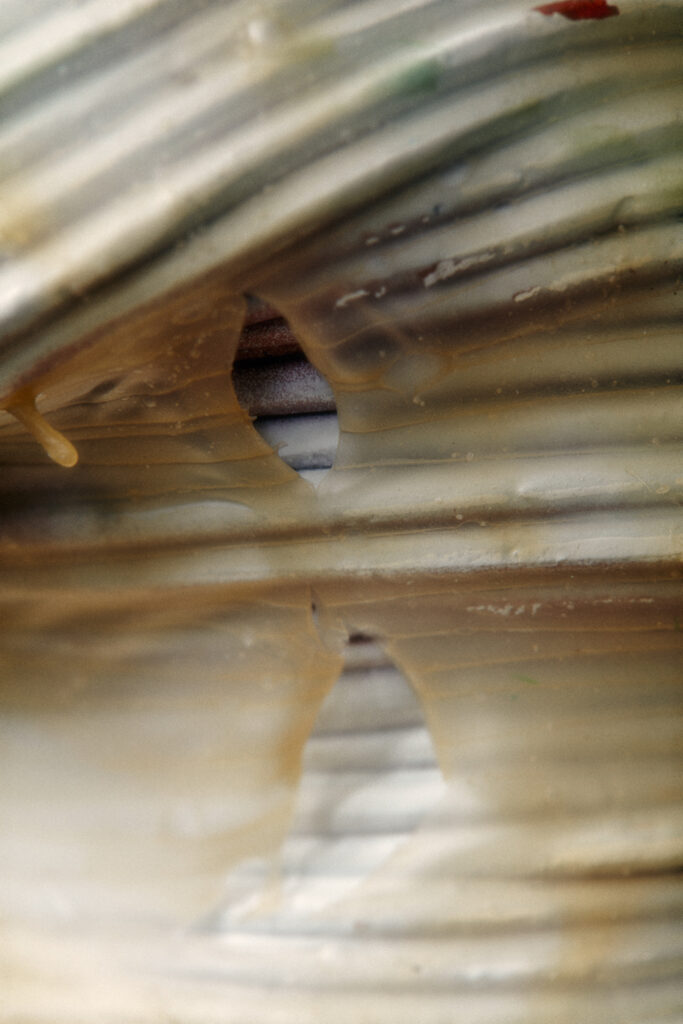
In 2023, Honey Fingers is celebrating its 10th anniversary. Dowse is putting together a significant survey exhibition, set to take place at Fitzroy Space At The Above in September 2023. In it, among other works from across Dowse’s career, he and French will present the 1:1 scaled version of their Worker desk, incorporating lessons from the maquette they included in Hive Hands. The desk will be extended to accommodate larger groups – more like a long table – and designed to run along the venue’s northern wall with its inbuilt bee chimney functioning as an entrance and exit for bees, directed through an open window. Here, for the duration of the exhibition, honeybees will take up their role as co-designers, working away within a hive installed inside the semitransparent chimney.
Around the table, Dowse will also host a program of public events, talks and happenings. While the trio’s collaboration is one of many that the exhibition will encompass, it will nonetheless be an opportunity to engage with the central themes of the ongoing collaboration. Critically, the table will be a site for consideration of the social, environmental and cultural learnings that might be drawn from the artist’s practices, from bees to bioplastics and on to the other notional and real-world realms of design, making and objects.
These practices – from beekeeping to non-petrochemical production – are intrinsically connected to landscape, weather and climate, to the health of our ecosystems and thus human health, to craft as well as evolving industrial processes and change. The objects arising from them sit at the intersection of some of the most imperative issues we face as a global community, posing urgent questions as well as possible solutions. Dowse, French and Ohmu all, in their own way, use art to interrogate the subtle but significant differences between necessary (and life-enhancing) production and unnecessary, consumerist productivity. They gesture at and capture the human capacity to be wonderfully generative without commodifying ourselves and everything around us into oblivion, the value of employing manual and industrial processes in balanced measure in the pursuit of a sustainable collective existence. The material solutions they are designing and creating may soon be ready for wider uptake, an invitation to the rest of us to join the hive.
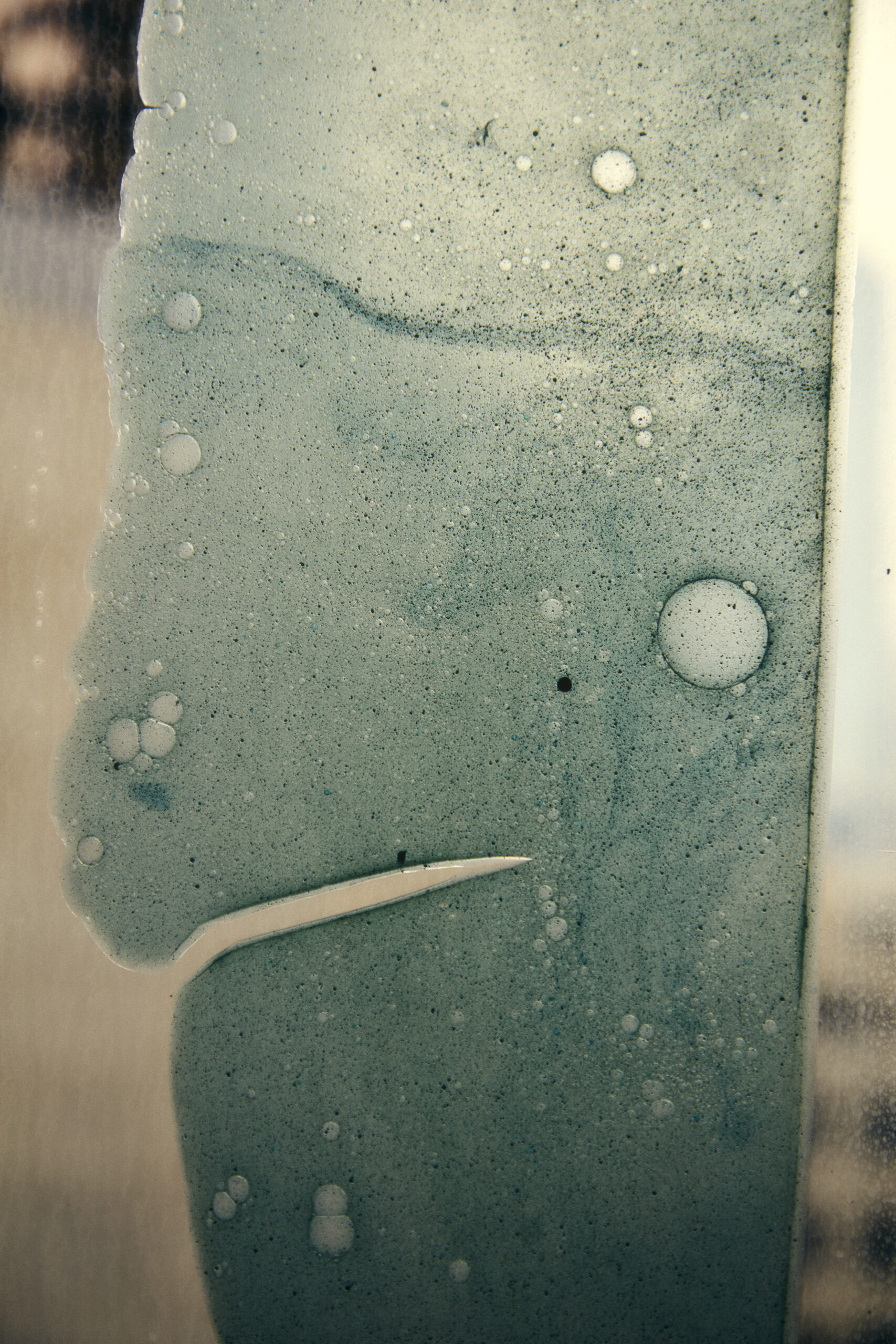
French’s artwork marbled with mineral pigment and Athrospira platensis microalage as pigment (detail).

process documentation for TYCY-designed exhibition graphics

Zhu Ohmu / Honey Fingers, The History of Beekeeping is Written on Broken Shards of Pottery, 2022, offcut plexiglass, broken ceramic coil pot, honeycomb produced from 2021-22 season, balsa wood, silicon, dimensions 110 x 36 x 180 cm. Fabrication by Jed Kelly, Boom Studios.

